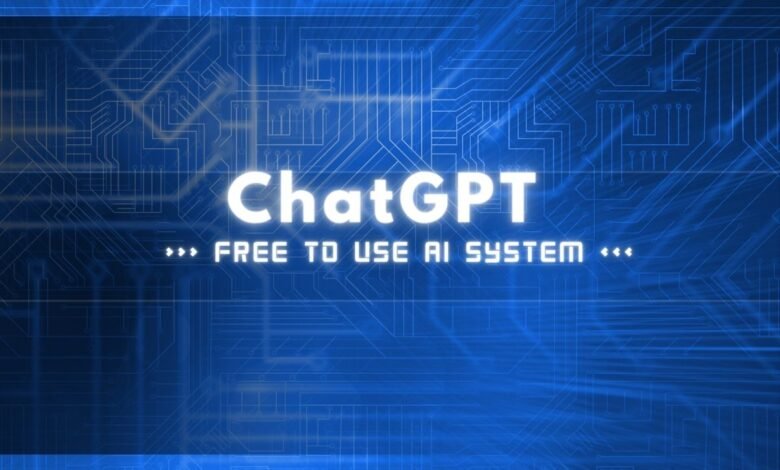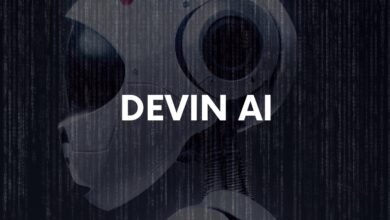What Is ChatGPT and How to Use It

Introduction
Chatbots and artificial intelligence (AI) constitute a substantial portion of our technological interaction today. With chatbots embedded in myriad platforms, and AI entities like Siri and Alexa becoming household names, the field is ripe for revolutionary strides. ChatGPT, built upon the formidable GPT-3.5 and now GPT-4 architectures by OpenAI, is at the forefront, redefining the depth and breadth of how we communicate with machines.
it is a highly advanced AI-powered conversational agent that can understand natural language, generate meaningful responses, and even provide solutions to complex problems.
What are Chatbots and AI Conversations?
Chatbots are computer programs designed to simulate conversation with human users. They use natural language processing (NLP) and machine learning algorithms to understand the user’s input and generate a relevant response. Chatbots can be used in various applications such as customer support, e-commerce, and even healthcare.
AI conversations, on the other hand, refer to the interactions between humans and artificial intelligence agents. These conversations can be text-based or voice-based, and they can be used to perform tasks such as ordering food, booking appointments, or even providing emotional support.
The history of chatbots and AI conversations
The history of chatbots dates back to the 1960s, when Joseph Weizenbaum developed ELIZA, a computer program designed to simulate human conversation. ELIZA used pattern matching and substitution to generate responses, and it was capable of simulating a psychotherapist.
In the following years, chatbots continued to evolve, and they became increasingly popular in the 1990s with the rise of the internet. Many companies began using chatbots for customer support, and some even developed virtual assistants that could perform tasks such as scheduling appointments.
AI conversations, on the other hand, became popular with the introduction of Siri, Apple’s virtual assistant, in 2011. Siri used natural language processing and machine learning to understand user input and generate relevant responses. Since then, many other companies have developed their own virtual assistants, such as Amazon’s Alexa and Google Assistant.
The current state of chatbots and AI conversations
Chatbots and AI conversations have come a long way since their inception. Today, they are used in various applications, such as customer support, e-commerce, and healthcare. Many companies have also developed their own virtual assistants to provide personalized services to their customers.
The current state of chatbots and AI conversations is quite advanced. With the help of machine learning algorithms, chatbots can understand and generate natural language responses, and they can even provide personalized recommendations based on user input. AI conversations have also improved significantly, with virtual assistants becoming more accurate and reliable.
The future of chatbots and AI conversations
The future of chatbots and AI conversations is exciting, with many possibilities for innovation and improvement. One of the most significant advancements will be the integration of chatbots and AI conversations with other technologies such as augmented reality and virtual reality.
Chatbots will also become more sophisticated, with the ability to understand complex queries and provide more personalized responses. They will also be able to interact with users in a more human-like manner, using emotions and humor to build rapport.
AI conversations will also improve, with virtual assistants becoming more accurate and reliable. They will be able to perform more complex tasks, such as booking travel arrangements and managing finances. They will also become more integrated into our daily lives, with the ability to control smart homes and interact with other connected devices.
ChatGPT and the future of AI conversations
ChatGPT is at the forefront of the future of AI conversations. It is a highly advanced AI-powered conversational agent that is capable of understanding natural language, generating meaningful responses, and even providing solutions to complex problems. ChatGPT uses the latest natural language processing and machine learning algorithms to generate responses that are almost indistinguishable from those of a human.
One of the most significant advantages of ChatGPT is its ability to learn from previous conversations. As it interacts with more users, it becomes more accurate and can generate more relevant responses. This means that ChatGPT can provide personalized recommendations and solutions to complex problems, making it an indispensable tool for businesses and individuals alike.
ChatGPT is also highly adaptable, with the ability to integrate with other technologies such as augmented reality and virtual reality. This means that it can provide a seamless and interactive experience for users, making it a valuable asset for businesses looking to improve their customer service and engagement.
Another advantage of ChatGPT is its scalability. As more businesses and individuals adopt AI-powered conversational agents, the demand for scalable and reliable solutions will increase. ChatGPT can be deployed on a cloud-based platform, making it highly scalable and cost-effective.
Finally, ChatGPT has the potential to revolutionize the way we communicate with machines. As it becomes more sophisticated, it will be able to interact with users in a more human-like manner, using emotions and humor to build rapport. This will lead to a more personalized and engaging experience for users, making AI-powered conversational agents an indispensable tool for businesses and individuals alike.
How to use ChatGPT:
Access ChatGPT by registering an OpenAI account at chat.openai.com. Upon logging in, you can initiate a chat with ChatGPT by starting a conversation.

Using ChatGPT is straightforward. Users can access it through a web interface, mobile application, or integrate it into their own applications using APIs. The user can then start a conversation with ChatGPT, and it will generate responses based on the user’s input.
Benefits of ChatGPT:
- Efficiency: ChatGPT can process and generate text quickly, which makes it ideal for use in a variety of applications.
- Accessibility: ChatGPT can communicate with people in natural language, which makes it accessible to anyone with an internet connection.
- Scalability: ChatGPT can handle large volumes of data and can be easily scaled to accommodate a growing user base.
- Accuracy: ChatGPT is trained on vast amounts of data, which helps it to generate accurate and relevant responses to user queries.
- Personalization: ChatGPT can learn from user interactions and adapt its responses to better meet the needs of individual users.
- Continuous learning: ChatGPT is capable of continuously learning from new data, which enables it to improve its accuracy and relevance over time.
- Multilingual: ChatGPT can communicate in multiple languages, making it useful for global applications.
- 24/7 availability: ChatGPT can be available 24/7, providing users with access to information and support whenever they need it.
Limitations:
- Lack of emotional intelligence: While ChatGPT can generate responses that are almost indistinguishable from those of a human, it lacks emotional intelligence, making it difficult to understand the emotional context of a conversation.
- Limited domain knowledge: ChatGPT may not be able to provide accurate responses to questions outside its domain knowledge
- Privacy concerns: The use of AI-powered conversational agents raises privacy concerns, and businesses need to ensure that user data is kept secure and confidential.
Conclusion:
ChatGPT is a powerful tool that has the potential to revolutionize the way we communicate with machines. Its ability to learn from previous conversations, scalability, adaptability, and potential for human-like interaction make it a valuable asset for businesses and individuals alike. While it has some limitations, the benefits of using ChatGPT far outweigh them. Businesses that use ChatGPT can improve their customer service, increase efficiency, and reduce costs. As the technology continues to evolve, we can expect to see many exciting developments in the future of AI-powered conversational agents.

